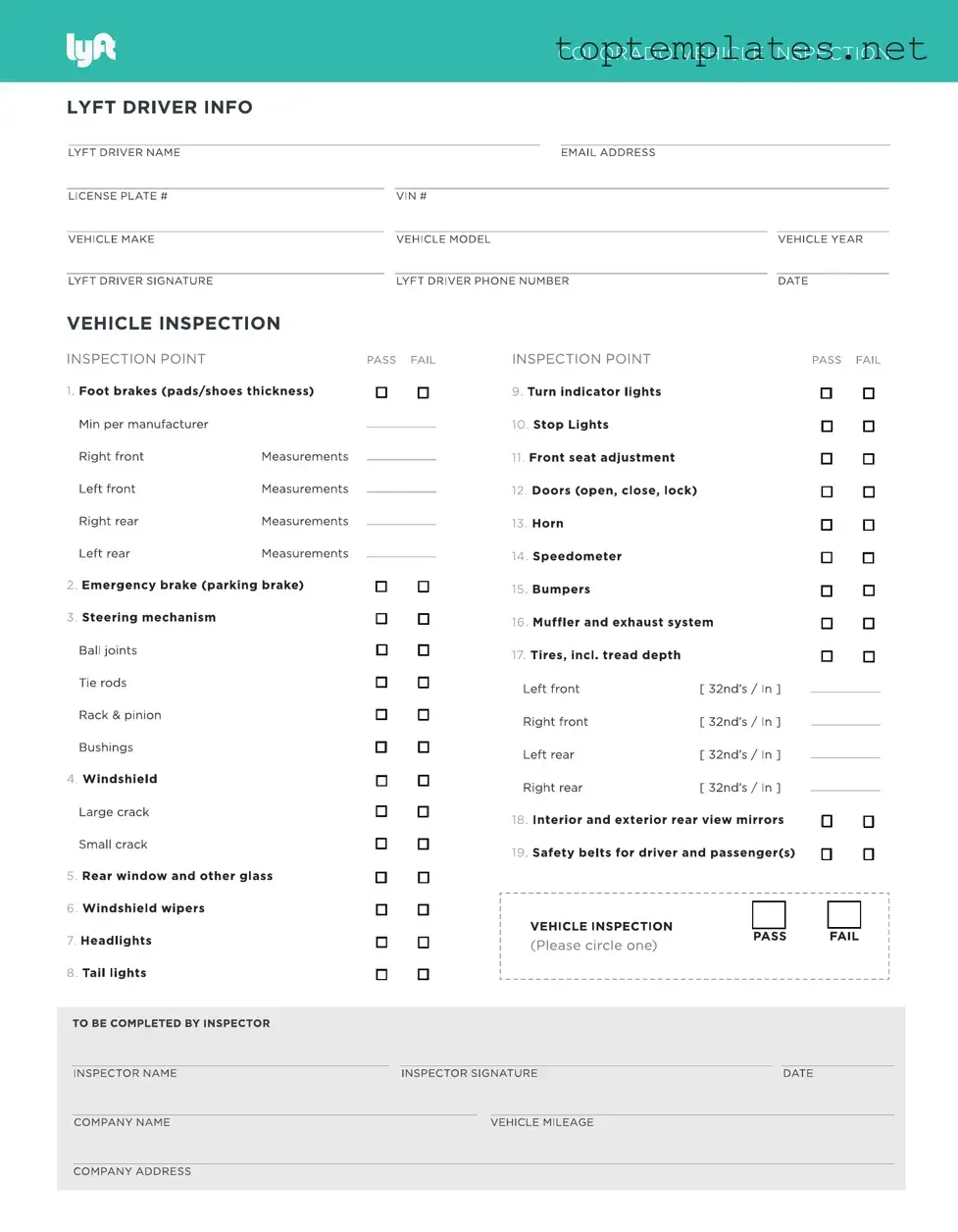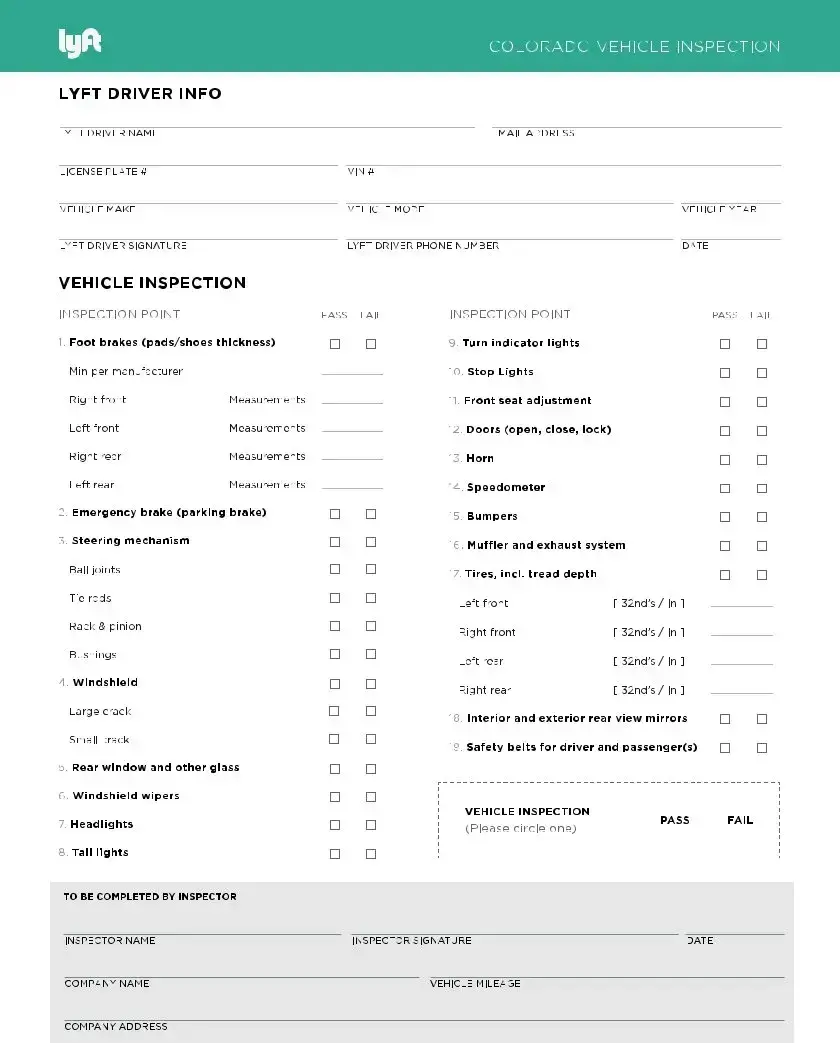What is the purpose of the Lyft Inspection form?
The Lyft Inspection form is designed to ensure that all vehicles operated by Lyft drivers meet safety and operational standards as required by Lyft and local regulatory law. The form is a checklist that assesses various aspects of a vehicle's condition, including but not limited to, brakes, tires, lights, and steering mechanisms.
Who is required to complete the Lyft Inspection form?
All drivers who wish to offer rideshare services through Lyft must complete the Lyft Inspection form. This is a mandatory requirement before being authorized to drive under the Lyft platform. Regular inspections might also be required to maintain an active driver status.
Where can one obtain a Lyft Inspection form?
Lyft Inspection forms are typically available at authorized Lyft inspection centers or can be downloaded from the Lyft driver platform. Drivers may need to log into their driver account to access the form. Additionally, some locations offer digital inspection services where the form can be filled and submitted electronically.
What is the cost of the vehicle inspection for Lyft?
The cost of the vehicle inspection can vary based on the location and the inspection center. Some centers offer free inspections for Lyft drivers, whereas others might charge a fee. Lyft occasionally partners with inspection centers to provide discounted or free inspections, so drivers are encouraged to check any ongoing offers.
How often does a vehicle need to pass the Lyft Inspection?
Typically, vehicles need to pass the Lyft Inspection annually to maintain compliance with Lyft's safety standards and local regulations. However, the frequency could vary based on local law requirements or Lyft’s policy changes. Drivers will receive notifications when their inspection results are close to expiring.
What happens if my vehicle fails the Lyft Inspection?
If a vehicle fails the Lyft Inspection, the driver is required to address all issues that led to the failure and submit the vehicle for another inspection. The driver cannot offer rides through Lyft until their vehicle passes the inspection and is deemed safe for operation.
Can I submit an inspection report from a third-party mechanic?
Yes, Lyft allows drivers to submit inspection reports from third-party mechanics as long as the mechanic is licensed and the inspection meets Lyft's criteria. It is important for drivers to ensure that the third-party inspection covers all points required in the Lyft Inspection form and that it is submitted within Lyft's specified timeframe.

